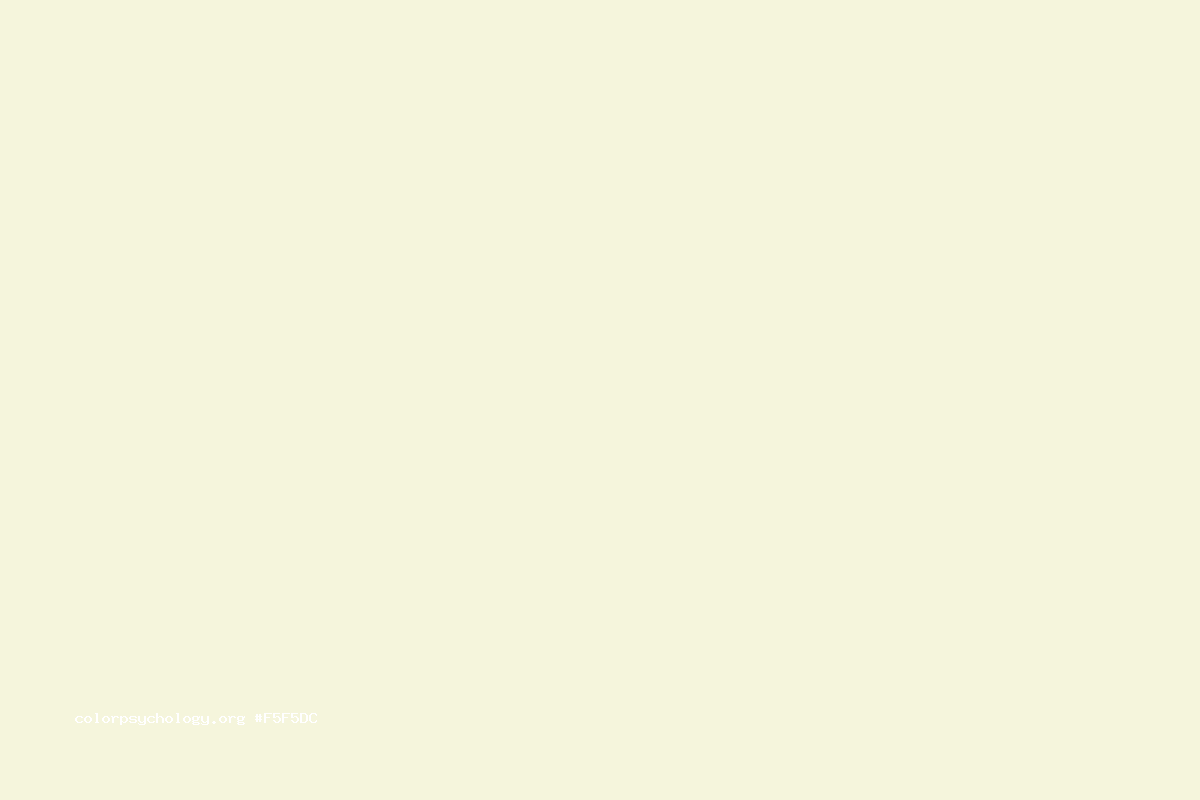Beige is a soft, light brown color that gives off a feeling of calmness, simplicity, and elegance. Its hex code is #F5F5DC, which is a mix of red, green, and blue values that create a warm, sandy hue.
|
Triad
A triad color scheme consists of three colors evenly spaced on the color wheel.
|
|
|---|---|
|
Tetrad
A tetrad color scheme uses four colors arranged into two complementary pairs.
|
|
|
Monochromatic
A monochromatic color scheme uses variations in lightness and saturation of a single color.
|
|
|
Analogous
An analogous color scheme uses colors that are adjacent to each other on the color wheel.
|
|
|
Split Complements
A split-complementary color scheme uses a base color and the two colors adjacent to its complement.
|
Beige Tints & Shades
|
Tints
Tints are created by adding white to a base color, resulting in lighter variations of the original color.
|
|||||||||
|---|---|---|---|---|---|---|---|---|---|
|
#f6f6df
|
#f7f7e3
|
#f8f8e6
|
#f9f9ea
|
#fafaed
|
#fbfbf1
|
#fcfcf4
|
#fdfdf8
|
#fefefb
|
#ffffff
|
|
Shades
Shades are created by adding black to a base color, resulting in darker variations of the original color.
|
|||||||||
|
#dcdcc6
|
#c4c4b0
|
#abab9a
|
#939384
|
#7a7a6e
|
#626258
|
#494942
|
#30302b
|
#181815
|
#000000
|
Create Color Palettes with Beige
The Meaning and History of Beige
The word “beige” comes from the French word “bège,” which means “natural wool.” This is because the color beige is similar to the natural color of wool before it is dyed or bleached.
Beige has been a popular color for centuries, particularly in fashion and home decor. In the 19th century, beige was often used in men’s clothing as a symbol of sophistication and refinement. In the 20th century, beige became a popular choice for interior design, particularly in the 1950s and 1960s.
Today, beige is still a popular choice for those who want to create a neutral, calming atmosphere in their home or workspace. It is often used as a backdrop for more colorful accents, or as a way to create a sense of warmth and comfort.
Uses of Beige in Marketing, Business, and Design
Beige is a versatile color that can be used in many different ways in marketing, business, and design. In branding, beige is often used to create a sense of sophistication, elegance, and reliability.
Many luxury brands use beige in their packaging and branding to convey a sense of quality and refinement. Beige is also a popular choice for businesses that want to create a sense of professionalism and trustworthiness, such as law firms or financial institutions.
In web design, beige is often used as a background color to create a sense of warmth and simplicity. It can be paired with more vibrant colors to create a sense of contrast and visual interest, or used on its own to create a clean, minimalist look.
In interior design, beige is a classic choice for creating a neutral, calming atmosphere. It is often used in living rooms, bedrooms, and home offices to create a sense of comfort and relaxation. Beige can be paired with other warm colors like brown, orange, or yellow to create a cozy, inviting space, or with cool colors like blue or green to create a sense of balance and harmony.

The Psychology of Beige
Beige is a color that is often associated with feelings of calmness, simplicity, and elegance. It’s warm, neutral tones can create a sense of comfort and security, making it a good choice for spaces where you want to feel relaxed and at ease.
In color psychology, beige is believed to be a grounding color that can help to reduce stress and anxiety. It’s simple, understated nature can create a sense of stability and reliability, making it a good choice for spaces where you want to feel focused and productive.
At the same time, beige can also be seen as a bit boring or bland if used too much. It is important to use beige in moderation and to pair it with other colors and textures to create visual interest and depth.
When used thoughtfully, beige can be a powerful tool for creating a neutral, calming atmosphere that feels both sophisticated and inviting. Its versatility and timeless appeal make it a popular choice for a wide range of applications, from branding and web design to interior design and fashion.
In conclusion
Beige is a neutral, calming color with a long history and many uses. Its warm, sandy tones give off a feeling of simplicity, elegance, and comfort, making it a popular choice for creating a neutral, inviting atmosphere. Beige is a color that is sure to create a sense of calm and sophistication in any space, no matter if it’s used in branding, web design, or interior design.